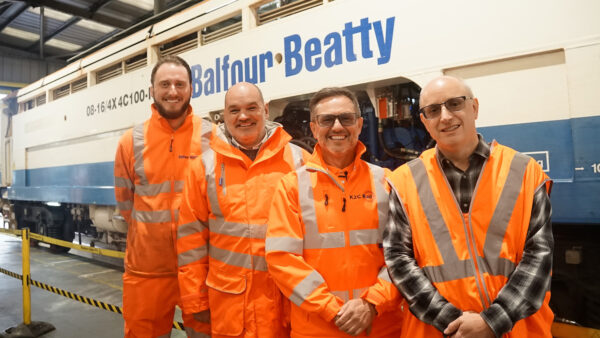
Much of construction is unaware how common worker exploitation is. But, as a new CIOB study shows, criminal elements can infiltrate the sites of even major contractors. Neil Gerrard examines the report.
It’s now three years since the Modern Slavery Act became law but, despite the problem being rife within construction, much of the industry is still doing a poor job of acknowledging or addressing worker exploitation in its supply chain.
That is the focus of a new Chartered Institute of Building report, Construction and the Modern Slavery Act, Tackling Exploitation in the UK, released last month.
Emma Crates, the report’s author, found there was “little doubt” that UK construction supply chains are at risk of being infiltrated by criminal activities such as modern slavery.
A recent Chartered Institute of Procurement & Supply survey found that 58% of construction procurement managers were fairly or very confident that they did not have modern slavery in their supply chains. But Crates says: “It is highly improbable that they are correct.”
She warns that industry overconfidence could be down to “the common misconception that immigration – or right-to-work checks – will also detect modern slavery”.
How companies have responded to the Modern Slavery Act

In fact, the National Crime Agency (NCA) estimated in 2014 that there were between 10,000 and 13,000 victims of modern slavery in the UK and by summer 2017 it was speculating that the real figure was considerably higher.
Because the crime is hidden and government figures only record cases that have successfully come through the multi-agency reporting process, it’s hard to get a true reflection of the scale of the problem. But in 2017, victims in the UK were identified from 116 countries, including 819 British citizens.
Vietnam, Romania, China and the UK were the top source countries for adult labour. But several eastern European nations – a major source of recruitment for UK construction – were also high on the list.
CIOB report trio named among top modern slavery influencers
Three people closely involved in the Chartered Institute of Building’s (CIOB) recently published report on worker exploitation in construction have been named among the top influencers on modern slavery.
CIOB chief executive Chris Blythe, Emma Crates, who researched and wrote Construction and the Modern Slavery Act, Tackling Exploitation in the UK, and professor Jacqui Glass at Loughborough University’s school of architecture, who was quoted in the report, were all named in the 2018 Annual UK Top 100 Corporate Modern Slavery Influencers’ Index.
Chris Harrop, sustainability director at products firm Marshalls, was also named for his promotion of ethical supply chain practices.
The CIOB’s report highlighted the fact that modern slavery shouldn’t be viewed in isolation, but tied up with other exploitative practices such as health and safety breaches, banning of unions, blacklisting, illegal wage deductions, excessive working hours, withholding of passports, bullying, intimidation and squalid accommodation.
It pointed to a number of “systemic” factors that put workers at risk, including business models based on outsourcing (with 99% of the industry made up of SMEs), reliance on labour agencies, a high percentage of migrant workers, very low margins, and a lack of labour standards enforcement in the sector.
“The tone is being set at the top of supply chains as many public and private sector clients create an environment that is pricing out legitimate players and facilitating unethical operators,” Crates warns.
Perhaps unsurprisingly, it also found that the response from construction to the Modern Slavery Act 2015 has been sluggish.
Under the act, all businesses with a turnover above £36m have to publish an annual transparency in supply chains (TISC) statement on the activities they have carried out to combat modern slavery internally and in supply chains.
Crates describes initial responses as “patchy”, with construction lagging behind other industries in the quality of disclosure and many companies publishing their reports late.
Construction has made good progress on training and awareness programmes, with major contractors trying to reach further into supply chains but the sector still trails others.
The CIOB called for a “changing of the narrative” among firms, so that there is more acceptance of the risks of modern slavery.
It has launched a Routemap to Fair Business which sets out steps for raising standards for all workers and suppliers, encouraging a more proactive approach to tackling systemic issues.
Independent anti-slavery commissioner Kevin Hyland welcomed the CIOB’s work. He says: “This new report… provides clear ways for responsible companies to tackle slavery and ensure their labour supply is protected. I hope to see many construction businesses taking up its recommendations and making real changes, so that it can set an example to other high-risk sectors.”
For CIOB chief executive Chris Blythe, the solution lies in adopting better work principles as a means to curbing exploitative practices.
“We need to change the conversation that we have with clients, our peers and the media,” he argues. “Suppliers and labour agencies should be rewarded for finding and reporting problems, contractors need to promote fairer business models and clients need to be more explicit about their ethical expectations. This goes to the heart of professional leadership.”
He adds: “It’s time to get real about the challenges facing UK construction. Contrary to public perceptions, modern slavery is not confined to small illegal operators. Criminals are attracted to big business because of the greater profits that they can earn. Unscrupulous labour providers, operating in the grey area of the law, are also creating misery for thousands of British and foreign workers.”
How construction firms are tackling modern slavery
Lendlease
Lendlease launched a review of company procedures in light of the Modern Slavery Act, led by head of strategic procurement Andy Fulterer. The firm focused on its auditing – developing questions on modern slavery as part of the Achilles BuildingConfidence system it uses for its health, safety and quality audits. “The idea is not to catch suppliers out, but to upskill them,” Fulterer says.
Lendlease has also embedded a five-minute awareness video on modern slavery into its induction process to reach the large numbers of non-directly employed labour on its sites.
Additionally, staff undertake a yearly ethical training course in which they watch a video and answer questions. This is regularly updated to reflect changes in legislation.
Skanska
Skanska has slimmed down its preferred list of temporary worker agencies and now uses fewer than 10 labour-only agencies. Working with an agency aggregator, it has more visibility of the make-up of its workforce, says Harvey Francis, group HR director and executive vice president of Skanska UK.
Every year, a third-party provider carries out a two-day audit of Skanska’s labour suppliers, combined with labour checks on site. The firm rebalanced some selection criteria to focus on team behaviours – on some projects, commercial criteria account for only 30% of the score.
Skanska revised its code of conduct for employees in 2016, expanding sections on human rights and modern slavery, and has published a code of practice for suppliers.
Marshalls
Marshalls won CIOB praise for its “exemplary” work in India and other high-risk sourcing countries. But Chris Harrop, its group marketing and sustainability director, admitted it had done more work internationally than domestically until the Modern Slavery Act prompted it to look at the UK. It entered a partnership with anti-slavery NGO Hope for Justice in January 2017.
The firm has developed a policy where if a problem is suspected in UK operations with no immediate threat to life, it will contact law enforcement, the GLAA and Hope for Justice simultaneously to allow all parties to liaise.
Marshalls trains its 2,500-strong UK workforce online on modern slavery every year, as well as appointing modern slavery ambassadors.
Comments
Comments are closed.











Looking at the percentages I don’t think the industry are trying very hard to work with or solve the slavery problems.